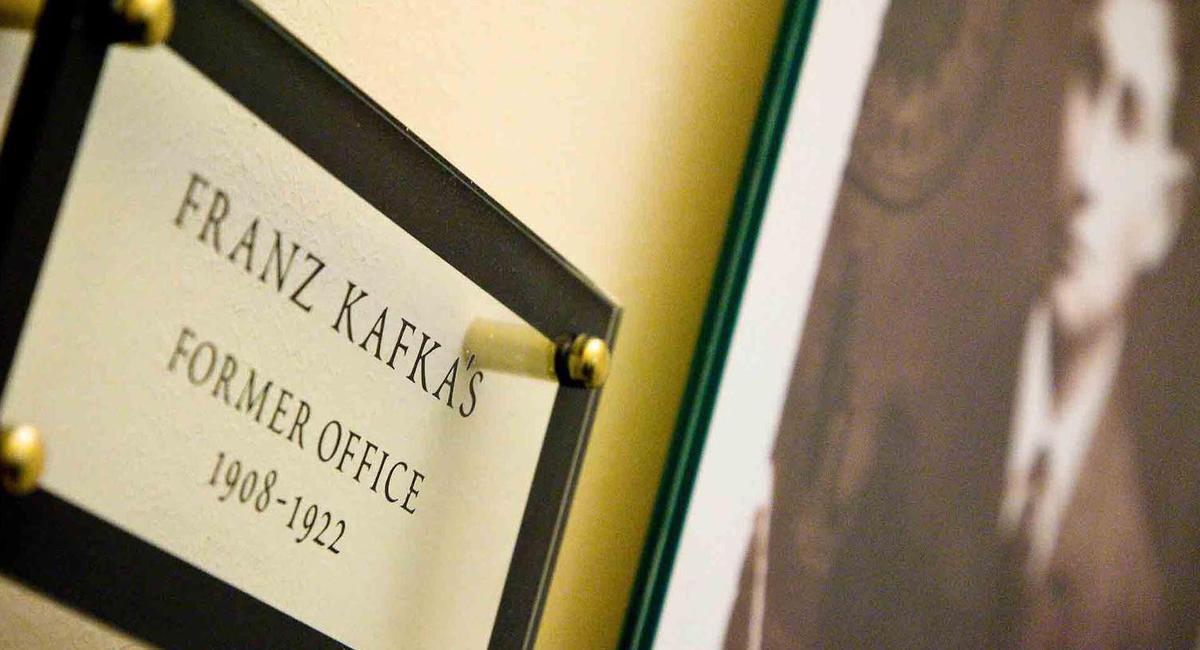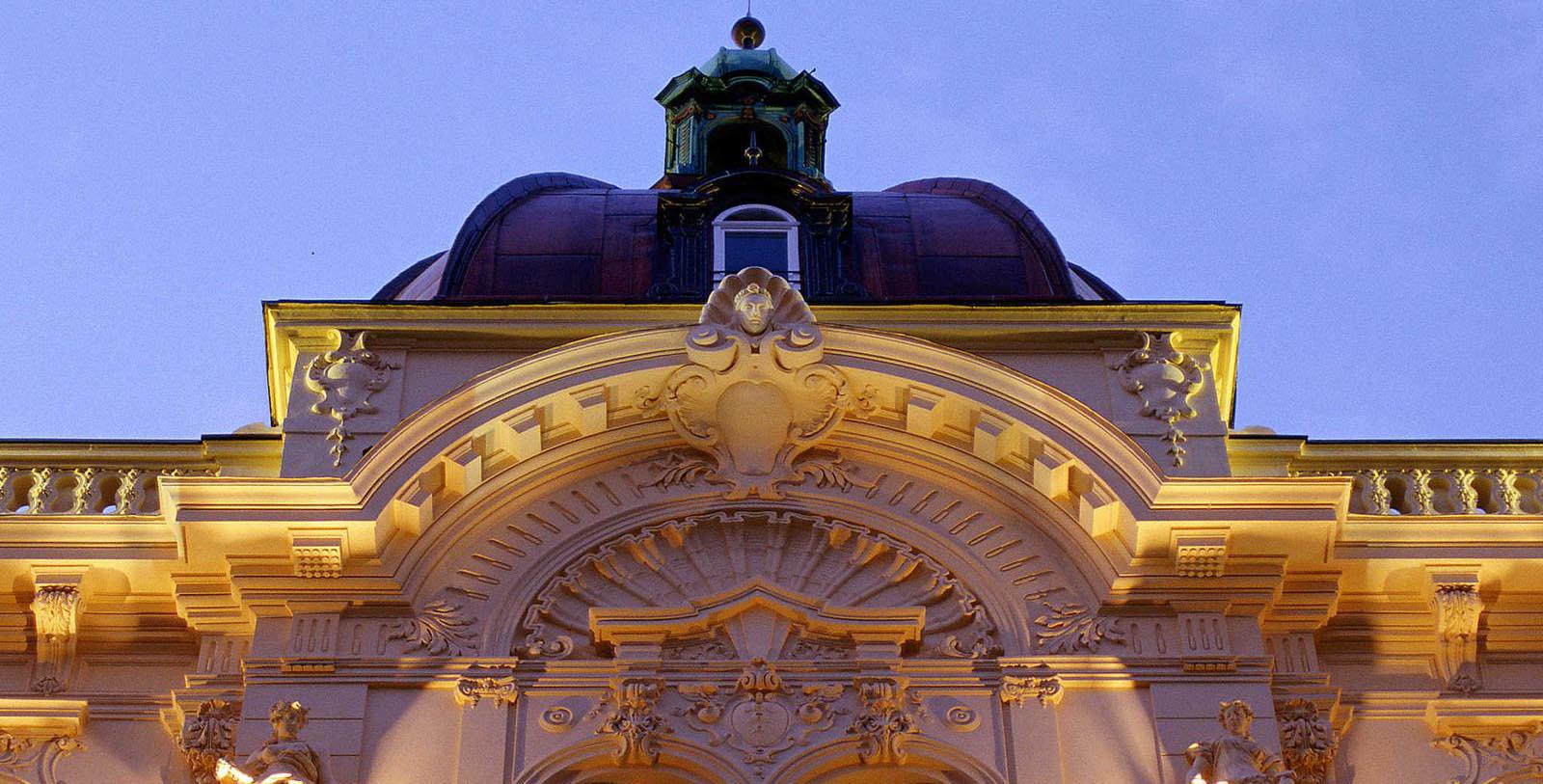Receive for Free - Discover & Explore eNewsletter monthly with advance notice of special offers, packages, and insider savings from 10% - 30% off Best Available Rates at selected hotels.
history
Discover the Hotel Century Old Town Prague - MGallery, which was once the home of the Workers’ Accident Insurance Institute of the Kingdom of Bohemia.
Hotel Century Old Town Prague - MGallery, a member of Historic Hotels Worldwide since 2018, dates back to 1894.
VIEW TIMELINEA member of Historic Hotels Worldwide since 2018, the Hotel Century Old Town Prague - MGallery by Sofitel is among the most outstanding holiday destinations in Prague’s Old Town Square. Dating back to 1894, the Baroque Revival-style building was designed by famous Czech architect, Alfons Wertmüller, who also created the Prague State Opera and the National Theatre. The building’s Baroque Revival architectural details include ornate sculptural reliefs, arched windows, and a large copper cupola. For most of its time, the building was used as office space for the Workers’ Accident Insurance Institute of the Kingdom of Bohemia. Besides its detailed architectural beauty, the building is famous for its connection to the illustrious author and intellectual, Franz Kafka, best known for his short story “The Metamorphosis.” Between 1908 and 1922, Kafka worked in the building as a clerk of Workers’ Accident Insurance Institute. Kafka’s office was in Room 214, which now houses the hotel’s exclusive “Kafka Suite.” The work that Kafka accomplished was very important to his career as a writer. For this reason, references to the Workers’ Accident Insurance Institute, his office, and his professional life can be found throughout his writing. Different themes from his career—such as deadlines, sick leave, and general office culture—provided endless sources of inspiration for most of his landmark literary works. In 2002, the building was turned into a hotel, and it became part of the MGallery by Sofitel collection seven years later. Recently in 2017, the hotel underwent a complete renovation. Designed by famous French interior designer Ana Moussinet, the hotel has made its own metamorphosis into one of the 21st century’s best destinations. Much of the new features were inspired by the 19th-century Cubism art movement, as well as Art Deco style. Nevertheless, the recent work has preserved the building’s historic architectural qualities. The hotel remains a must-see for those following the Kafka literary trail throughout Prague, as well as any who take an interest in history.
-
About the Location +
Prague was founded during the 9th century when a series of settlements began to form around two massive castles known locally as the “Vyšehrad” and the “Hradčany” (now named “Prague Castle”). A family of powerful nobles called the Přemyslids supervised the development of the area at the time, although historical records remain few and far between in relation to their story. Yet, many local oral traditions stipulate that Přemysl—the founder of the Přemyslid dynasty—and his wife, Libuše, constructed the two castles and their respective settlements. Nevertheless, the Přemyslids governed both communities for generations, gradually consolidating their base of power over the next five centuries. The protection that the two castles afforded made the locale a safe place for central European brokers to trade, giving rise to a prosperous market town that hugged the right side of the river. Known as the “Staré Mesto,” (or “Old Town” today), the new settlement formed the nucleus of modern-day Prague. The influx of new trade from across the continent also spawned a second town in the shadow of the Hradčany, which locals referred to as the “Malá Strana.” A massive series of fortifications defined by a ring of stone walls and towers enclosed the area, as well, providing more protection for the inhabitants. Commerce continued to flow into the community, too, inspiring foreign merchants from Germany and Italy to relocate into the either the Staré Mesto or the Malá Strana. The region had, thus, become a major European city by the start of the 1300s, complete with its own form of currency and powerful town guard. The Přemyslids had even made the settlement the official seat for the Kingdom of Bohemia, which they ruled as a semi-autonomous fiefdom within the much larger Holy Roman Empire.
The House of Luxembourg succeeded the Přemyslid dynasty during the mid-14th century, when John of Luxembourg inherited the Bohemian throne. His own son, Charles IV, eventually became the Holy Roman Emperor and used Prague as the official imperial capital throughout his reign. He subsequently oversaw the massive expansion of the locale, going on to establish such magnificent structures like Charles University, the Carolinum, and St. Vitus’ Cathedral. Perhaps the greatest construction project conducted at the time was the creation of the neighborhood “Nové mesto” (or “New Town”) right next to the Staré Mesto. But despite Charles’ careful administration, simmering social and political tensions fomented among the populace. Bitterness within competing religious sects born of the Protestant Reformation intermixed uneasily with different ethnic groups to create a remarkably explosive environment. The hostility finally erupted at the beginning of the 15th century when a segment of the community revolted under the direction of priest Jan Želivský. While Želivský and his fellow “Hussites” were eventually subdued, periodic warfare affected the location for the next two centuries. In fact, the destructive Thirty Years’ War began, in part, after Protestant residents threw three Catholic officials from the windows of the Hradčany. (No serious injury befell any of the victims, though.) The subsequent fighting that spread across Central Europe amid the Thirty Years’ War reached Prague, too, culminating with the Battle of Prague in 1648. Swedish troops had attempted to capture the area in July, resulting in a prolonged siege that lasted until the winter. Ironically, it was the last major confrontation of the war.
In the wake of the Thirty Years’ War, the region reemerged once more as one of Europe’s most economically affluent. Save for a brief moment when Frederick the Great of Prussia invaded in 1744, the area enjoyed years of peace and prosperity. Its population grew significantly as such, numbering some 80,000 by the start of the 1770s. Local officials even decided to unite all the disparate communities into one single city that they officially christened as “Prague.” The new wealth flooding into the city led to a great construction boom that saw most of its brilliant Baroque-themed buildings open for the first time. By this point, the Kingdom of Bohemia had long since been absorbed by the Habsburg monarchs of neighboring Austria, forming an important part of the Austrian Empire and its successor, the Austro-Hungarian Empire. Rising nationalistic sentiment caused revolts to break out across Prague in 1848, driven by the harsh working conditions that had arisen during the Industrial Revolution. Over time, local Czechs began to gain more independence, although Prague itself remained a multiethnic enclave characterized by its many different people. Prague eventually became a capital city once more after World War I, when the Allied powers created Czechoslovakia from the defeated Austro-Hungarian Empire (the country had fought on the side of the Central Powers.) Prague subsequently remained the capital for the rest of the century, save for a seven-year period when Nazi Germany had seized control over the entire country in 1930s and 1940s. Today, Prague is the political, economic, and cultural center of the Czech Republic, which formed following the collapse of the Iron Curtain in the 1990s. It is home to many outstanding cultural attractions, as well, including Wenceslas Square, Charles Bridge, and of course, the Hradčany (Prague Castle). The entire Staré Mesto has even been recognized as a World Heritage Site by UNESCO!
-
About the Architecture +
When the renowned architect Alfons Wertmüller created what would become the Hotel Century Old Town Prague - MGallery by Sofitel, he used Baroque Revival-style architecture as the source for his inspiration. Also known by the name of “Second Empire” in France—where it originated—Baroque Revival-style architecture merely imitated some of the design principles of the original Baroque art form of the Early Modern period. Baroque Revival architecture was specifically meant for larger structures that could easily showcase its ornate features and grandiose materials. Architects, business owners and other professionals who embraced the form believed that it represented the best of modernity and human progress. The form looked similar to the equally popular Italianate-style, in which it embraced an asymmetrical floor plan that was rooted to either a “U” or “L” shaped foundation. The buildings usually stood two to three stories, although some commercial structures—like hotels—exceeded that threshold. Large ornate windows proliferated across the facade, while a brilliant warp-around porch occasionally functioned as the main entry point. The porches would also have several outstanding columns, designed to appear smooth in appearance. Every window and doorway featured decorative brackets that typically sat underneath lavish cornices and overhanging eaves. Gorgeous towers known and cupolas typically resided toward the top of the building, too. Yet, Second Empire architecture broke from Italianate in one major way—the appearance of the roof. Architects always incorporated a mansard-style roof onto the building, which consisted of a four-sided, gambrel-style structure that was divided among two different slopes. Set at a much longer, steeper angle than the first, the second slope often contained many beautiful dormer windows. The mansard roof became a central component to Second Empire architect after Georges-Eugène Haussmann and his fellow French architects starting using it for their own designs. They had specifically sought to copy the mansard roof of The Louvre, which the renowned François Mansart had created back at the height of the French Renaissance.


























